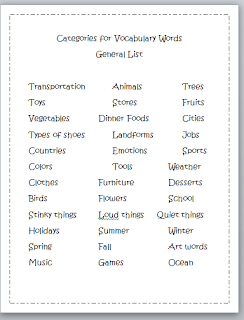This strategy is a great one for sharing ideas and building vocabulary. It takes minimum prep work and materials, too! All you need are index cards and markers or pencils.
Here's what to do:
Students work by themselves to generate words or phrases that come to mind when they think of a certain topic. They record these words on separate index cards.
Then in a small group, students share the words they thought of and eliminate duplicates.
Students then sort the ideas into categories - the categories can be created by the students or the teacher.
Finally after the groups are done, take a walk around the room to see what each group has sorted.
As a whole class, debrief....what did you notice? what surprised you? what would you change?
What does it look like in a real classroom??? I used it this week as a review before an end of unit test....
1. I asked the kids to brainstorm as many words and/or phrases as they could think of about the Civil War. They could use their notebooks for support.
2. Next, they worked in the group to eliminate duplicates.
3. I gave them the categories to sort by - North, South, West Virginia, Battles, Leaders, and Roles of Virginians.
4. Then we did the gallery walk and debrief.
Total time was about 20 minutes...we made lots of connections across categories too!
Here's what to do:
Students work by themselves to generate words or phrases that come to mind when they think of a certain topic. They record these words on separate index cards.
Then in a small group, students share the words they thought of and eliminate duplicates.
Students then sort the ideas into categories - the categories can be created by the students or the teacher.
Finally after the groups are done, take a walk around the room to see what each group has sorted.
As a whole class, debrief....what did you notice? what surprised you? what would you change?
What does it look like in a real classroom??? I used it this week as a review before an end of unit test....
1. I asked the kids to brainstorm as many words and/or phrases as they could think of about the Civil War. They could use their notebooks for support.
2. Next, they worked in the group to eliminate duplicates.
3. I gave them the categories to sort by - North, South, West Virginia, Battles, Leaders, and Roles of Virginians.
4. Then we did the gallery walk and debrief.
Total time was about 20 minutes...we made lots of connections across categories too!


















